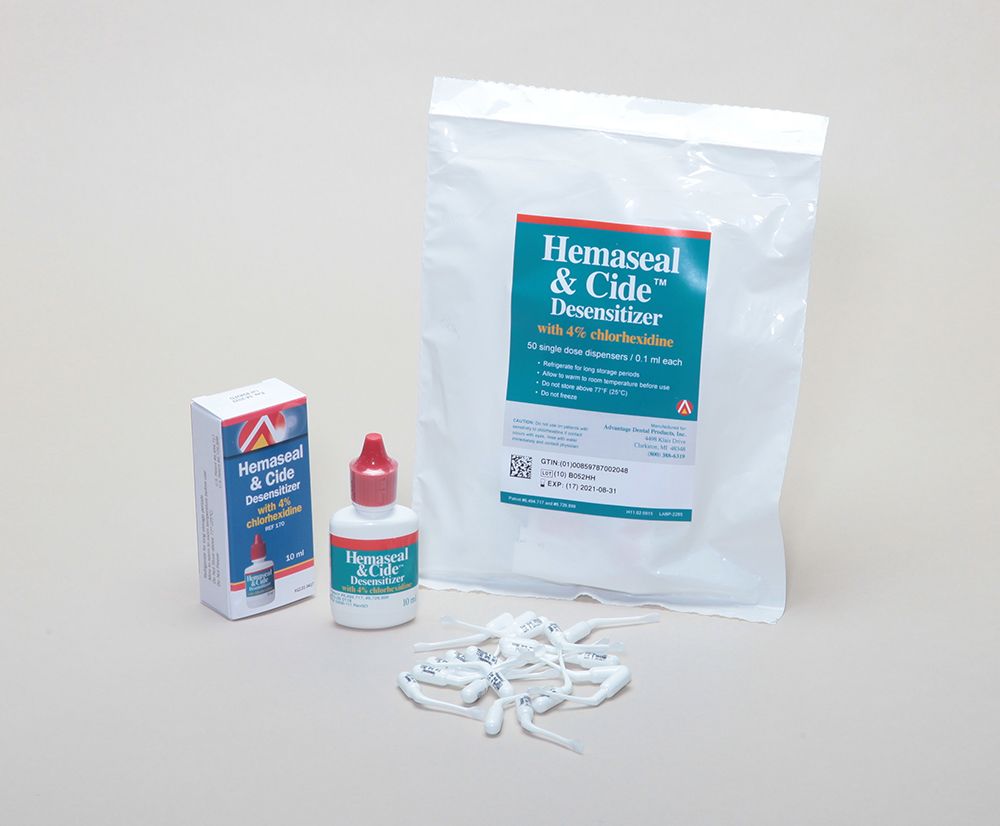5Ws* Hemaseal & Cide Desensitizer
This desensitizer with chlorhexidine from Advantage Dental Products, Inc, improves bond strength with self- and total-etch products and does not burn the soft tissues.
Information provided by Advantage Dental Products, Inc.

What
Hemaseal & Cide Glutaraldehyde-Free Desensitizer/Cleanser
Who
Advantage Dental Products, Inc
800-388-6319
Where
Every dental practice that provides restorative care can use a desensitizer that eliminates postoperative sensitivity and prolongs the bond to dentin.
When
Hemaseal & Cide Desensitizer is ideal for direct bonding procedures and crown preparations. It can be used every time a temporary or permanent crown is placed.
Why
The material is free of glutaraldehyde, and an independent testing laboratory report indicates Hemaseal & Cide Desensitizer showed twice the antimicrobial activity of 2 popular glutaraldehyde-based desensitizers. Additionally, it is lower priced and cannot burn the free gingiva/soft tissue, like glutaraldehydes. It is available in bulk bottles and unit dose.
The How*
Shown to increase bond strength and decrease microleakage, the desensitizer is formulated to provide optimal antimicrobial properties. The 4% chlorhexidine is a major differentiator, as chlorhexidine can lower the surface tension of water. It is a linear molecule with a dual pole–positive charge and is attracted to the negatively charged tooth. As one positive pole is drawn into a negatively charged tooth, the other positive pole is available to attach to the negative cell wall of the bacteria. As it infuses the bond surface, it also brings 2-hydroxylethyl methacrylate (HEMA) and water with it, providing optimal antimicrobial activity and improved bonding or cementation.
